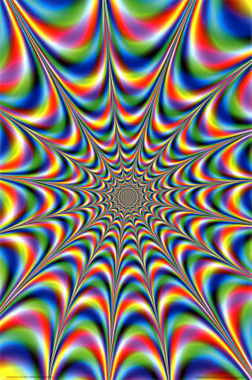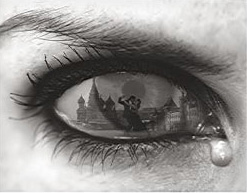
Original Digital Art: The Big Picture
Original Digital Art: The Big Picture
 With the advancement of today’s computer technology, the world of art has been thrown into a tailspin. New and original digital art tools are being created with every passing day, and are serving to take the art world to loftier heights. Those who were only able to illustrate their artistic creations on paper with brushes are now capable of churning out their visionary works in a fraction of the time, and with much less physical effort and no mess. Photographers who used to painstakingly agonize over the correct lighting, position, and shutter speed of a photograph now merely have to snap a picture and glorify it on the computer. As much as digital advancements are being appreciated in the genres of graphic design, music, photography, and film production, they are slow to gain acceptance within the more “serious” art forms, such as drawing, painting, and sculpture. This is somewhat due to the notion that it is not the artist, but the computer doing the work. It is also argued that the image produced is infinitely reproducible, and therefore can never remain an original digital art piece.
With the advancement of today’s computer technology, the world of art has been thrown into a tailspin. New and original digital art tools are being created with every passing day, and are serving to take the art world to loftier heights. Those who were only able to illustrate their artistic creations on paper with brushes are now capable of churning out their visionary works in a fraction of the time, and with much less physical effort and no mess. Photographers who used to painstakingly agonize over the correct lighting, position, and shutter speed of a photograph now merely have to snap a picture and glorify it on the computer. As much as digital advancements are being appreciated in the genres of graphic design, music, photography, and film production, they are slow to gain acceptance within the more “serious” art forms, such as drawing, painting, and sculpture. This is somewhat due to the notion that it is not the artist, but the computer doing the work. It is also argued that the image produced is infinitely reproducible, and therefore can never remain an original digital art piece.
Types of Digital Art Software
There are essentially two types of digital art software: the 2D (two-dimensional) and the 3D (three-dimensional). The 2D tools allow the user to draw on a flat surface, much like drawing on paper or on a canvas, yet the artist is using a mouse or graphic tablet instead of a pencil or paintbrush. The 3D tools allow you to create characters, architecture, landscape, objects, and special effects, and the computer takes a “photograph” of the image. There are countless painting, drawing, and design programs that artists can utilize in both 2D and 3D.
 With the introduction of such original digital art software, art takes on a more organized style. These programs will organize a user’s favourite paintbrushes, papers, and effects for easy access. Some digital art software offers what is called “cloners” in their virtual brushes, which can take the exact color from a source image of a photograph and allow the user to replicate it.
With the introduction of such original digital art software, art takes on a more organized style. These programs will organize a user’s favourite paintbrushes, papers, and effects for easy access. Some digital art software offers what is called “cloners” in their virtual brushes, which can take the exact color from a source image of a photograph and allow the user to replicate it.
Painting programs have become very realistic, and can provide the user with more than what the ordinary paintbrush can produce. They can mimic the effect of using a pallet knife, and allow the user to select different paper textures in order to experience various effects. Another widely-used digital art tool is the graphic tablet, a remarkable gadget that allows the user to draw freehand, creating interesting and unique digital art. It can even simulate the more classical effects of an oil painting or a watercolour. The resulting work can then be printed on paper or canvas. Many state-of-the-art painting programs available now will allow you to load up your paintbrush with a color that you have mixed yourself, and lay down a brushstroke that slowly dries. Users can choose to work with almost any medium, such as chalk, pencils, pastels, oils, watercolours, felt pens, and ink.
Art on the go!

Not only do digital art tools allow you to create realistic pieces of art, but they have also affected art in a profound way by making it more portable and accessible. With the prevalence of laptops in today’s society, an art studio can be carried around, thereby constantly at an artist’s fingertips.
It has enhanced art by taking it to the masses. With easy user guides and specific tools that can mimic lines, effects, and colors, original digital art masterpieces can be created by pretty much anyone, even someone with no previous background or training in art. Those who have never had the proper precision or visual acuity to create stunning oil paintings or sketches, now have the chance to craft original digital art pieces.
The introduction of digital tools has made the hobby of art less pricey. With the ongoing decrease in costs for computers, software, and websites, undertaking digital art can be less expensive than purchasing oil paints, numerous brushes, different canvases, easels, and various other art supplies.
For Better or Worse
Many in the art world will argue that digital art has nothing on the real thing; that any piece of digital art can be reproduced by someone else with the same program, and that there can never be an original digital art piece. This is an erroneous statement, as some digital artists have taken to deleting the image file of the masterpiece when it is completed, thereby rendering the piece an original. While a painting may fade, chip, or crack over time, works produced with digital printing equipment have remarkable longevity. When printed with modern digital art technology, colors can last from 60 to 100 years.
Donovan Gauvreau
Art Historian, Donovan Gauvreau lectures about art therapy with a focus on creativity development. He believes we can learn from the great masters in art to communicate ideas and feelings through painting. He provides content for www.AaronArtPrints.org to educate and inspire people to take a glimpse into an artist's life to better understand the meaning behind their work.












